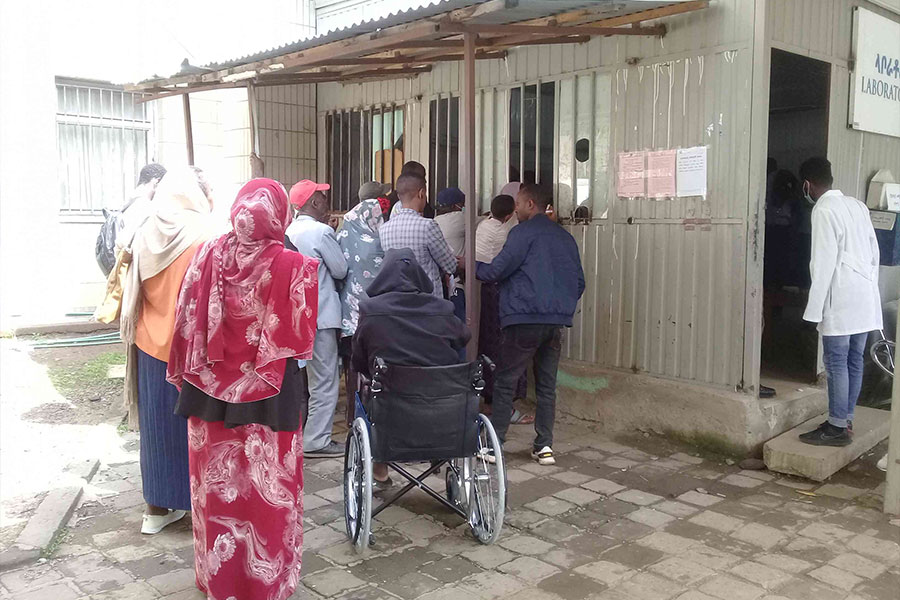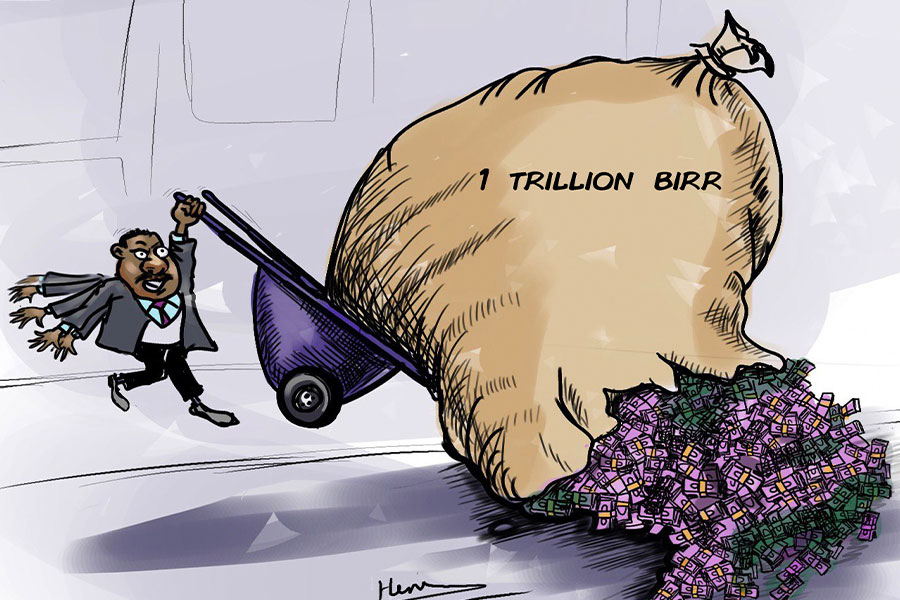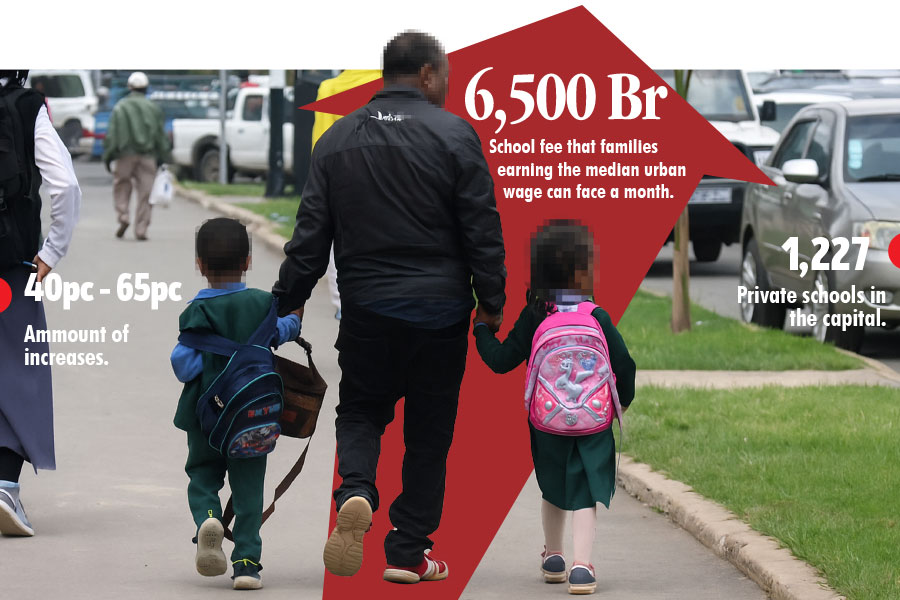
Nov 27 , 2021
By Ton Haverkort
How can governments get their populations to eat more leafy green vegetables and fish, asks Ton Haverkort, country director of the Global Alliance for Improved Nutrition (GAIN). Fortification is a powerful tool in this set, offering a rapid remedy at a low cost.
Working in nutrition, it falls to me to explain, quite often, how unusually nutritious teff is as a staple food. Many of the world’s staple foods, from maize to rice, are filled with starch, which gives our body energy but does not necessarily provide the protein, fibre, vitamins or minerals we need to be healthy.
By contrast, a single serving of dry teff, with its mildly nutty flavour and incredible versatility, delivers seven grams of protein, four grams of dietary fibre, 25pc of daily recommended magnesium, 20pc of daily iron and 10pc of daily calcium, Vitamin B6 and zinc.
It is a nutrition cocktail that Ethiopia can be proud of as a starting point for its diet, which might even leave one wondering why the government has highlighted the fortification of foods with vitamins and minerals as an important game-changer in the Food Security Plan it unveiled at the United Nations Food System Summit last month.
The answer lies in human potential. For we have come a long way indeed in reducing hunger. The level of hunger has been reduced by half and childhood malnutrition and stunting have also reduced dramatically. The government’s moves to enhance agriculture, provide vitamin supplements to children through health extension services, and drive our economy forwards to reduce poverty have all led to falling levels of malnutrition.
Yet it has become clear that there are actually two targets in nutrition to get to full health. The first is enough energy and access to starches to keep our weight up and energy going. The second is about what those of us in nutrition call micronutrients, which are all the elements of fish, dairy, vegetables and meat that see humans develop to their full potential.
However, a report last year from the United Nations’ Food and Agriculture Organisation (FAO) looked at the cost of staple foods that were full of starch and the cost of an entire diet with enough vitamins and minerals for health. It found that a fully nutritional diet costs five times as much as an inadequate diet dominated by starch.
But years of data that we have lodged with the FAO shows that the average Ethiopian diet gets 70pc of its energy from starch. The same records show we are generally low in vital nutrients like Vitamin A and folic acid. This used to be the case, too, with iodine, until the government ruled that iodine must be added to our salt.
In fact, all of these nutrients are key to brain development, as well as in the strength of our immune system in countering disease. Yet, our FAO records show we get about half the folic acid we need, and without it, there is a risk of unborn babies developing deformed brains and spines. Over half of these babies are stillborn, and many more die at under five years of age.
We are also short of vitamin A, which fuels our immune system, which means that small infections can become very serious, causing the unnecessary deaths of several thousand children a year.
Recently, GAIN calculated the cost to the country caused by these deficiencies based on the number of people affected by severe health problems as a result, counting up the additional health care costs and lost productivity, and found in just this very partial analysis that the deficiencies were reducing GDP by more than half a billion dollars a year.
Addressing this challenge is something that is requiring multiple health and policy initiatives. For how do we get our population eating more leafy green vegetables, and more fish? But fortification is also a powerful tool in this set, offering a rapid remedy at a low cost.
There are initial costs equipping producers to add vitamins to their foods, but, after that, reaching into the diets of most of our population with extra iodine, or vitamin A, or folic acid, just quietly ends most of these nutritional deficiencies, helping every child to meet its full potential.
Thus, with the ambition to end stunting by 2030, as committed by nine ministries in the Seqota Declaration Program, the government has gone beyond the first base of starvation and included plans to give all access to a healthier and richer diet, reducing the seriousness of infections and fatigue, increasing our brainpower and productivity and giving us all a better national future ahead.
PUBLISHED ON
Nov 27,2021 [ VOL
22 , NO
1126]


Radar | Sep 10,2022

Verbatim | Apr 04,2020

Fortune News | Sep 22,2024

Viewpoints | Jan 11,2020

Radar | Nov 23,2019

Agenda | Jun 17,2023

Verbatim | Jan 13,2024

Commentaries | Oct 14,2023

Viewpoints | Jun 03,2023

Viewpoints | Dec 11,2021

My Opinion | 131584 Views | Aug 14,2021

My Opinion | 127940 Views | Aug 21,2021

My Opinion | 125915 Views | Sep 10,2021

My Opinion | 123539 Views | Aug 07,2021

Dec 22 , 2024 . By TIZITA SHEWAFERAW
Charged with transforming colossal state-owned enterprises into modern and competitiv...

Aug 18 , 2024 . By AKSAH ITALO
Although predictable Yonas Zerihun's job in the ride-hailing service is not immune to...

Jul 28 , 2024 . By TIZITA SHEWAFERAW
Unhabitual, perhaps too many, Samuel Gebreyohannes, 38, used to occasionally enjoy a couple of beers at breakfast. However, he recently swit...

Jul 13 , 2024 . By AKSAH ITALO
Investors who rely on tractors, trucks, and field vehicles for commuting, transporting commodities, and f...

Jun 28 , 2025
Meseret Damtie, the assertive auditor general, has never been shy about naming names...

Jun 21 , 2025
A well-worn adage says, “Budget is not destiny, but it is direction.” Examining t...

Jun 14 , 2025
Yet again, the Horn of Africa is bracing for trouble. A region already frayed by wars...

Jun 7 , 2025
Few promises shine brighter in Addis Abeba than the pledge of a roof for every family...

Jun 29 , 2025
Addis Abeba's first rains have coincided with a sweeping rise in private school tuition, prompting the city's education...

Jun 29 , 2025 . By BEZAWIT HULUAGER
Central Bank Governor Mamo Mihretu claimed a bold reconfiguration of monetary policy...

Jun 29 , 2025 . By BEZAWIT HULUAGER
The federal government is betting on a sweeping overhaul of the driver licensing regi...

Jun 29 , 2025 . By NAHOM AYELE
Gadaa Bank has listed 1.2 million shares on the Ethiopian Securities Exchange (ESX),...